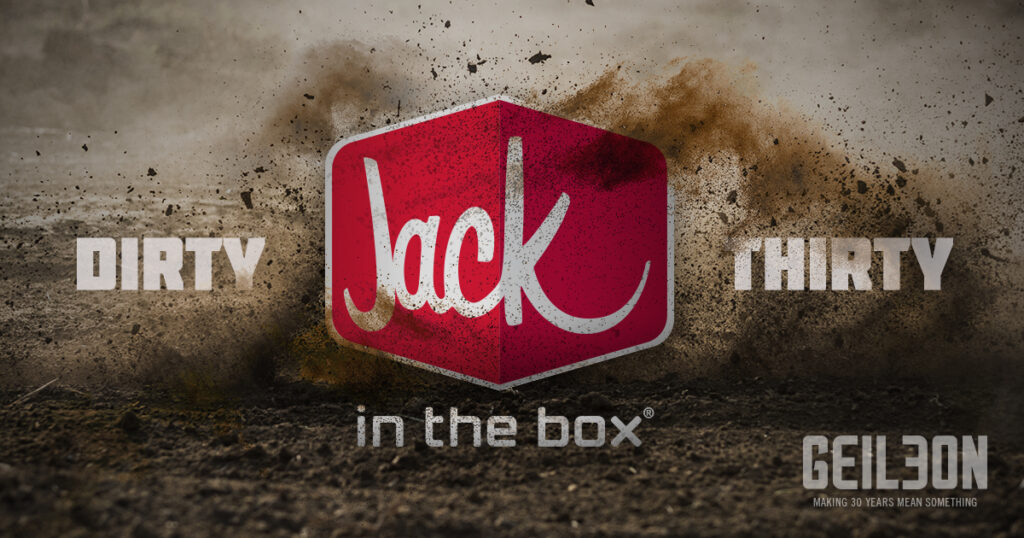In honor of the 30th anniversary of when we first hung our shingle, we have been revisiting some fond memories over the past few months. However, since our founding in 1989, there have been plenty of stories of brands who have bottomed out. We explore some of our favorite stories from the past 30 years of brands dusting off the dirt and getting back on their feet in this series, the Dirty 30, a three-decade retrospective of redemption.
After kicking off the series last week with Exxon’s disaster in Valdez, we take a look at the thinking man’s fast food clown and the crisis that created him.

In January of 1993, Jack in the Box suffered the first and worst of what many fast-food chains have suffered since: an E coli outbreak. In a rash of cases that affected hundreds, undercooked burgers caused an existential crisis for the chain. While Jack in the Box did take on the medical expenses of the victims and run an extensive PR campaign taking responsibility and vowing to provide improved oversight, customers were rightfully wary to return to the chain. Despite Jack in the Box’s ensuing advertising campaigns offering steep discounts, sales decreased by 24% between 1992 and 1995.
In order to alter the fate of the franchise, newly hired agency TBWA Chiat/Day went Jack to the future. The iconic clown head was originally the franchise’s mascot during their early days, famously featured in the drive thru with speaker and microphone inside so drivers would place your order directly with Jack. However, in an effort to differentiate themselves from a certain family-focused fast food chain with an arguably much more iconic clown and golden arches, a Jack in the Box advertisement in 1980 literally blew up the clown head with the company’s leadership declaring the restaurant to be a more mature burger destination.
In 1995, over a decade after they blew up their mascot, creative director Rick Sittig envisioned the return of Jack Box. The deposed mascot made his return, this time with a suit and a mission. In a television spot that featured Jack declaring a new era, He punctuated his promise for change by throwing a bomb into the boardroom, literally blowing up the company’s leadership. This reversal of fortune helped provide a metaphor for ridding the company of those who the public viewed as responsible for the outbreak (even though none of the company’s leadership were harmed or even fired in the rebranding).
The new, irreverent Jack Box was a huge hit, a relatable character became the change agent that their customers desired. Jack had such a resonance with fast food fans that he remained at the forefront of the chain’s marketing efforts for nearly three decades. The chain reaped immediate benefits from the branding shift, bouncing back from a $63 million loss in 1995 to net earnings of $20 million in 1996. Per-store sales rose by 7.2% and customer visits grew by 7.7% thanks to the clown-face of the franchise.
The thing about a brand crisis is that each one is different. While so much has changed over the past 30 years that Geile/Leon has been around, there is also so much that has remained the same. Being forthright, proactive and responsive to customers’ needs is a timeless art, but with information traveling so much more rapidly and consumers being more informed than ever, effective crisis management is now more important than ever.
Stay tuned for the next installment of the Dirty 30, and if you missed it, go back and last week’s Dirty 30: Exxon Goes Tone Deaf in Valdez.